Altrix
Helping NHS Trusts save money and fill Band 5 shifts by putting nurses in control of their careers
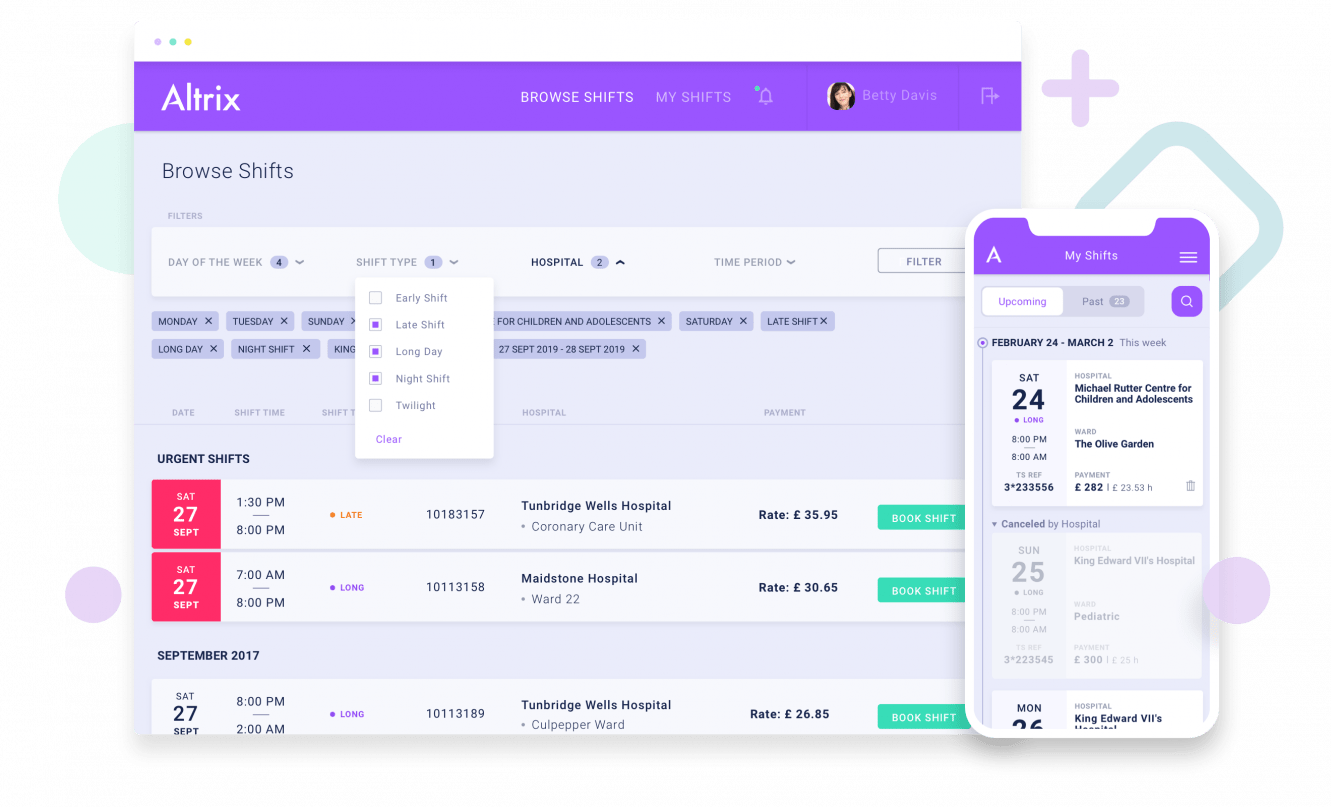
Unfilled shifts have the potential to impact patient care and finding, recruiting and placing qualified off-payroll agency nurses can be an expensive headache for the NHS. In early 2018 startup Altrix set out to change that with their innovative hybrid model, handling compliance and charging a flat and transparent fee per shift, saving hospitals money and giving nurses more take-home earnings.
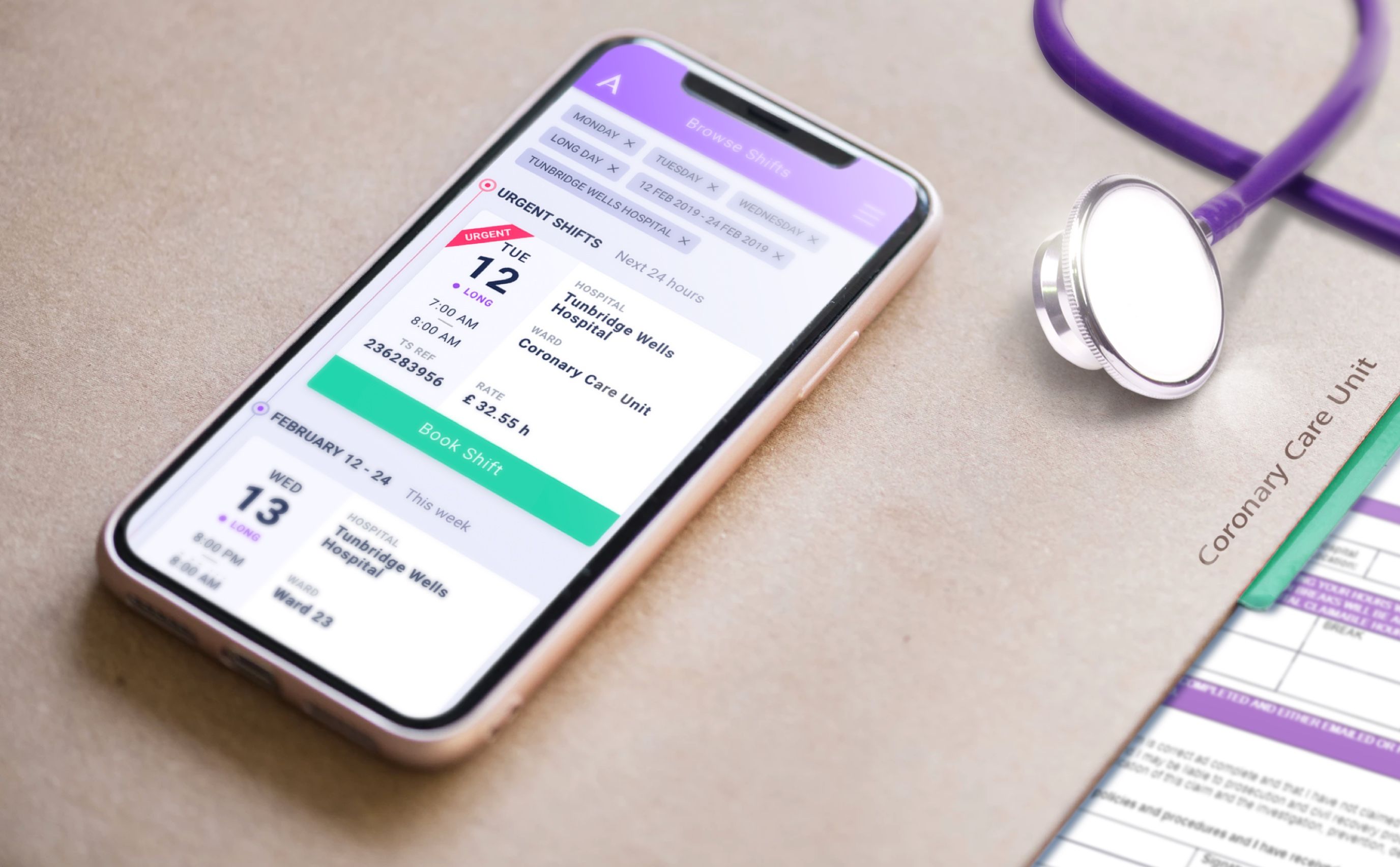
The Challenge
Altrix set out to disrupt a £3.6bn market in the UK by delivering an innovative platform for hospitals to quickly and easily fill available shifts with a community of Band 5 nurses, saving the NHS up to 85% and over on agency fees for short notice shifts. To do this, the new Altrix platform would need to be user friendly, intuitive and watertight to meet strict NHS compliance standards.
What We Did
With a strong background in recruitment, Altrix was in a good position to innovate in a new market. They came to us at a very early stage with their idea, so we guided them through ideation, discovery, design, development and release iterations taking a technical co-founder role.
Insights
In order to disrupt the nursing recruitment market, Altrix needed to innovate by:
The Approach
During the ideation and discovery phases, we quickly identified areas where more research and industry insight would be needed to give us a granular view of all the user scenarios within the shift booking system. Once this was in place, together we defined the key features the first iteration (MVP, or minimum viable product) would need to have. This approach allowed for a streamlined workflow, enabling us to get the concept to market to deadline and budget.
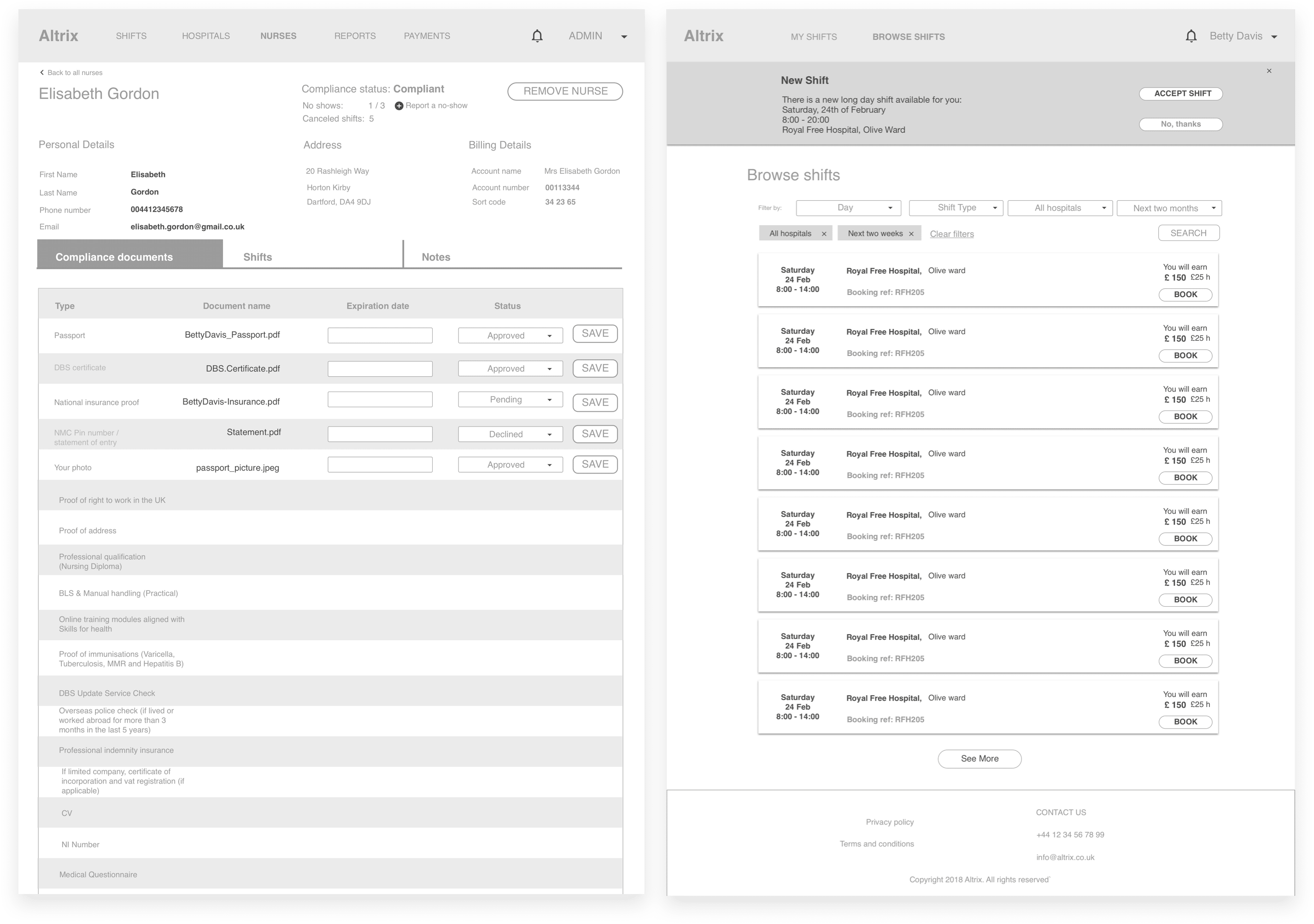
Because Altrix's model is a hybrid one, it meant that the platform needed to handle the screening and compliance side of recruiting nurses, a complex and vital area. During discovery we held a number of workshops with the Altrix team and interviewed key industry stakeholders, all of which allowed us to build flow diagrams of the various user roles.
The next step was to create the first iteration of design wireframes and the Business Requirements Document, which was how we encapsulated each step in the process and set out and communicated the rules, logic and requirements of the platform.

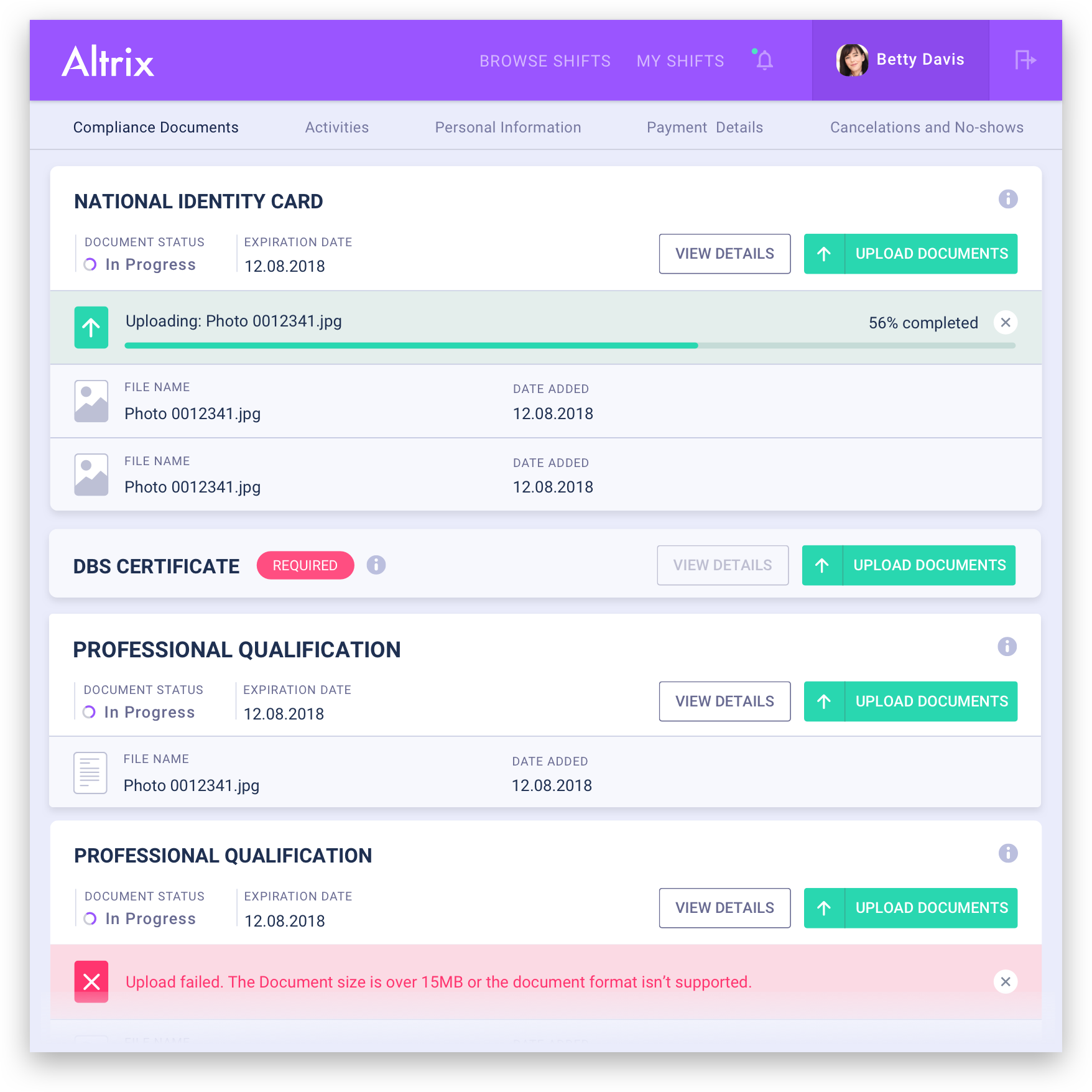
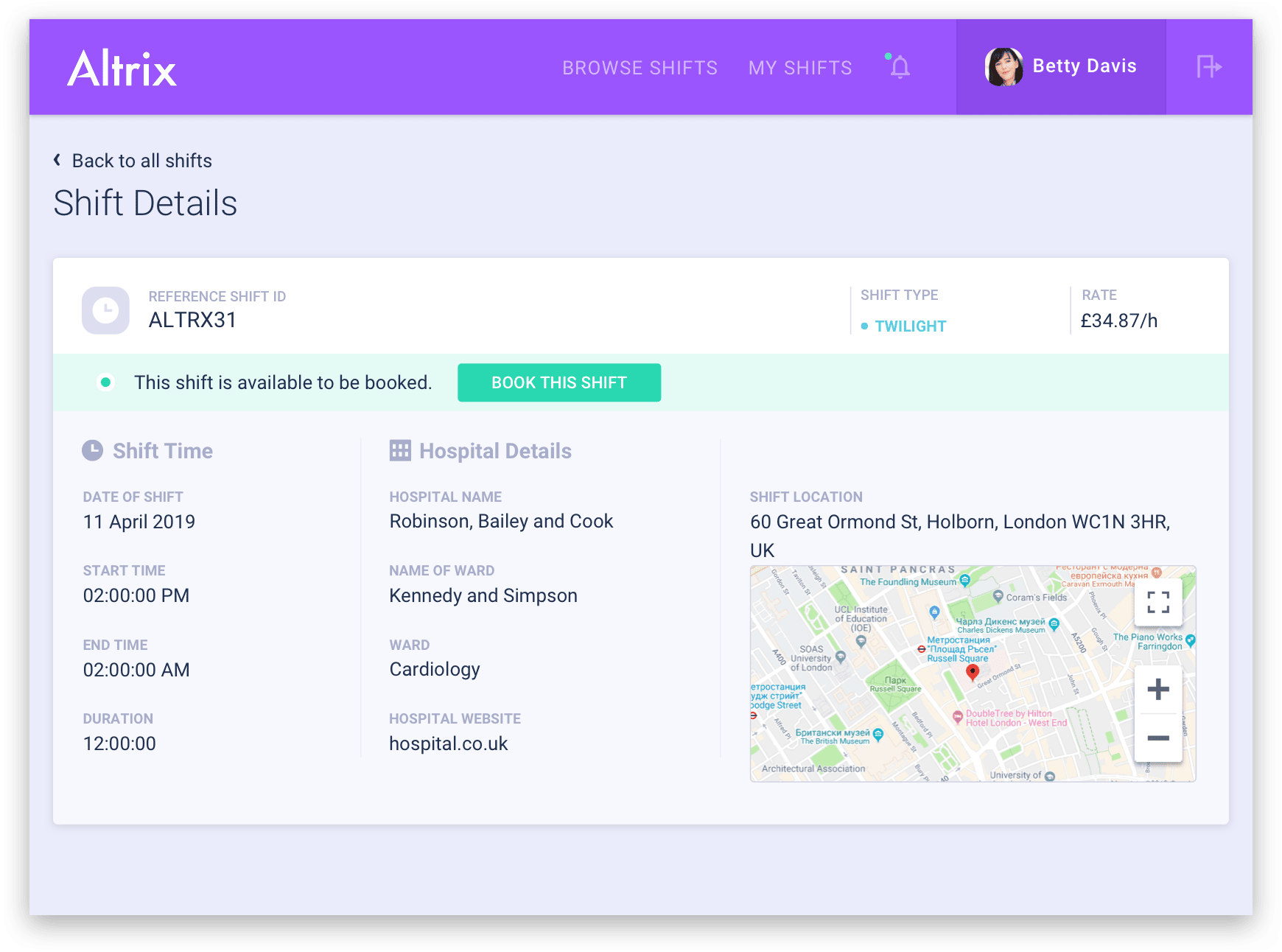
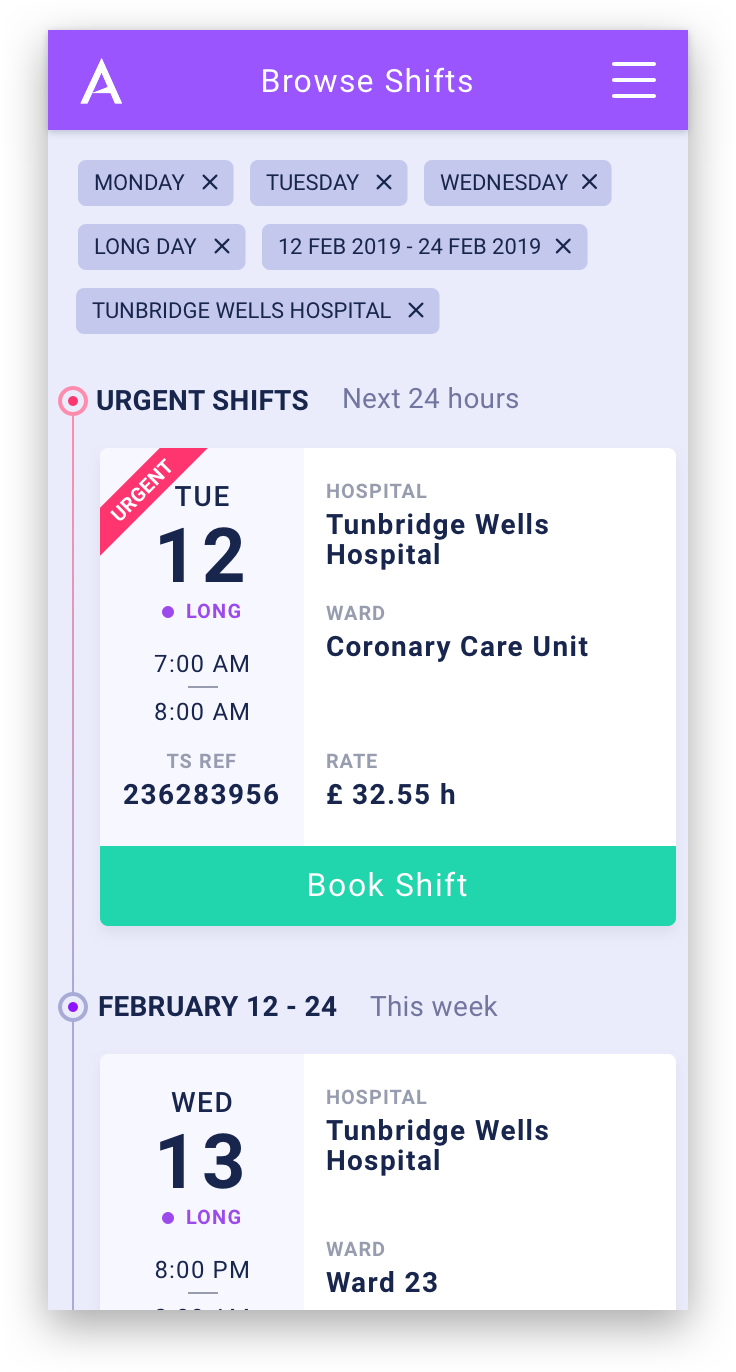
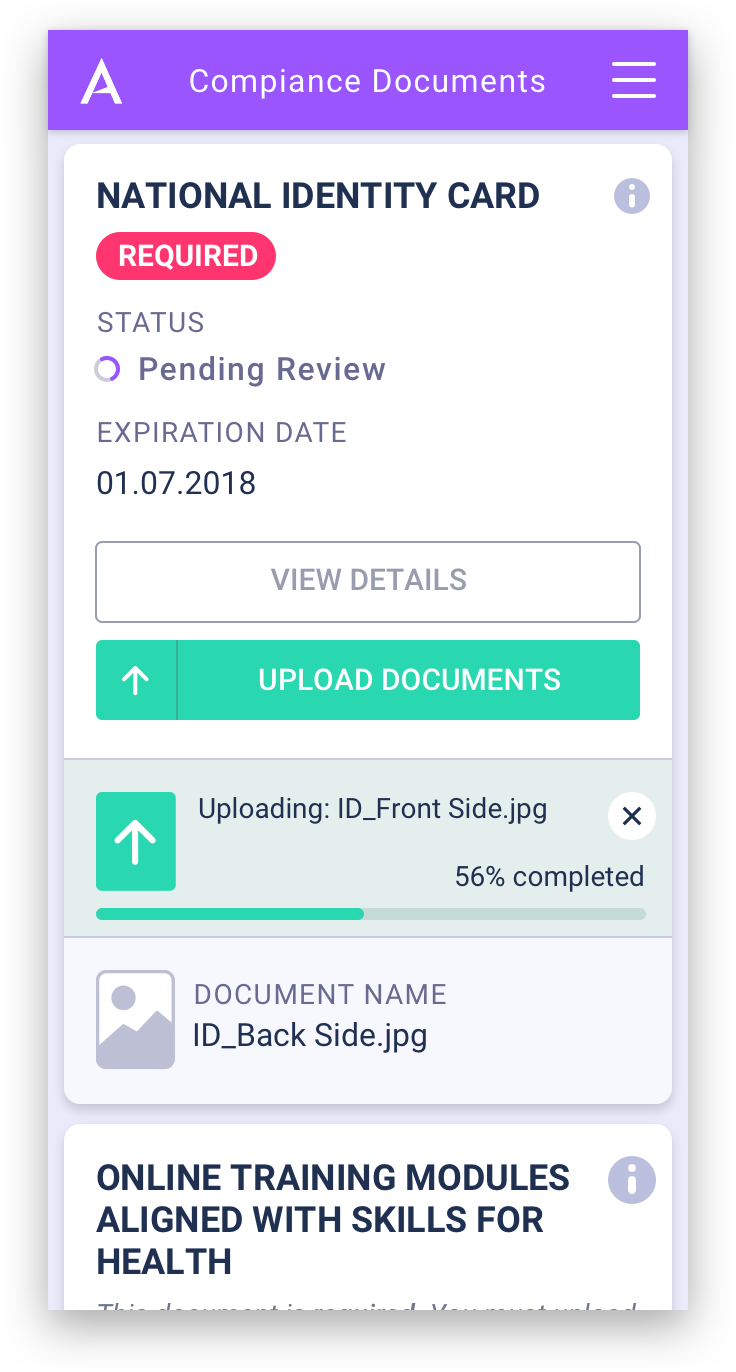
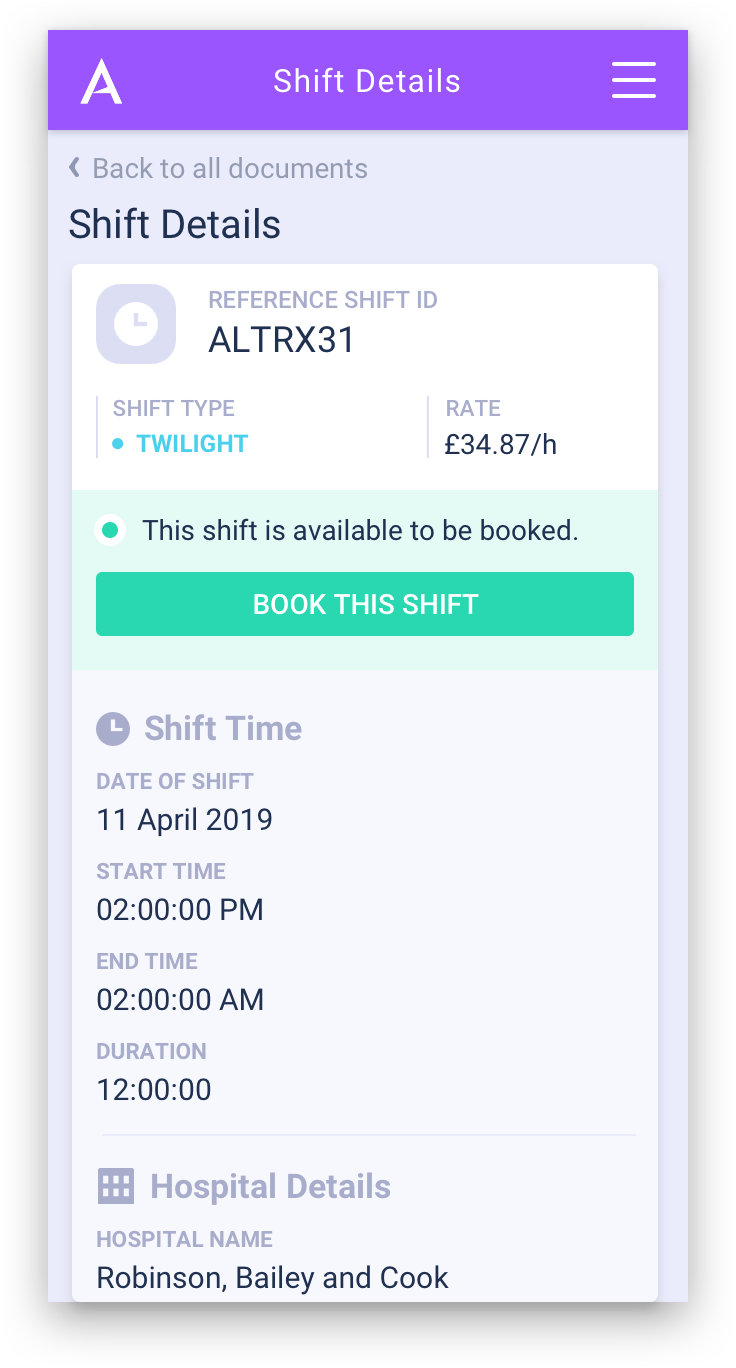
_01-60b4d91463d3876d8b29357c4af5d8b3.gif)
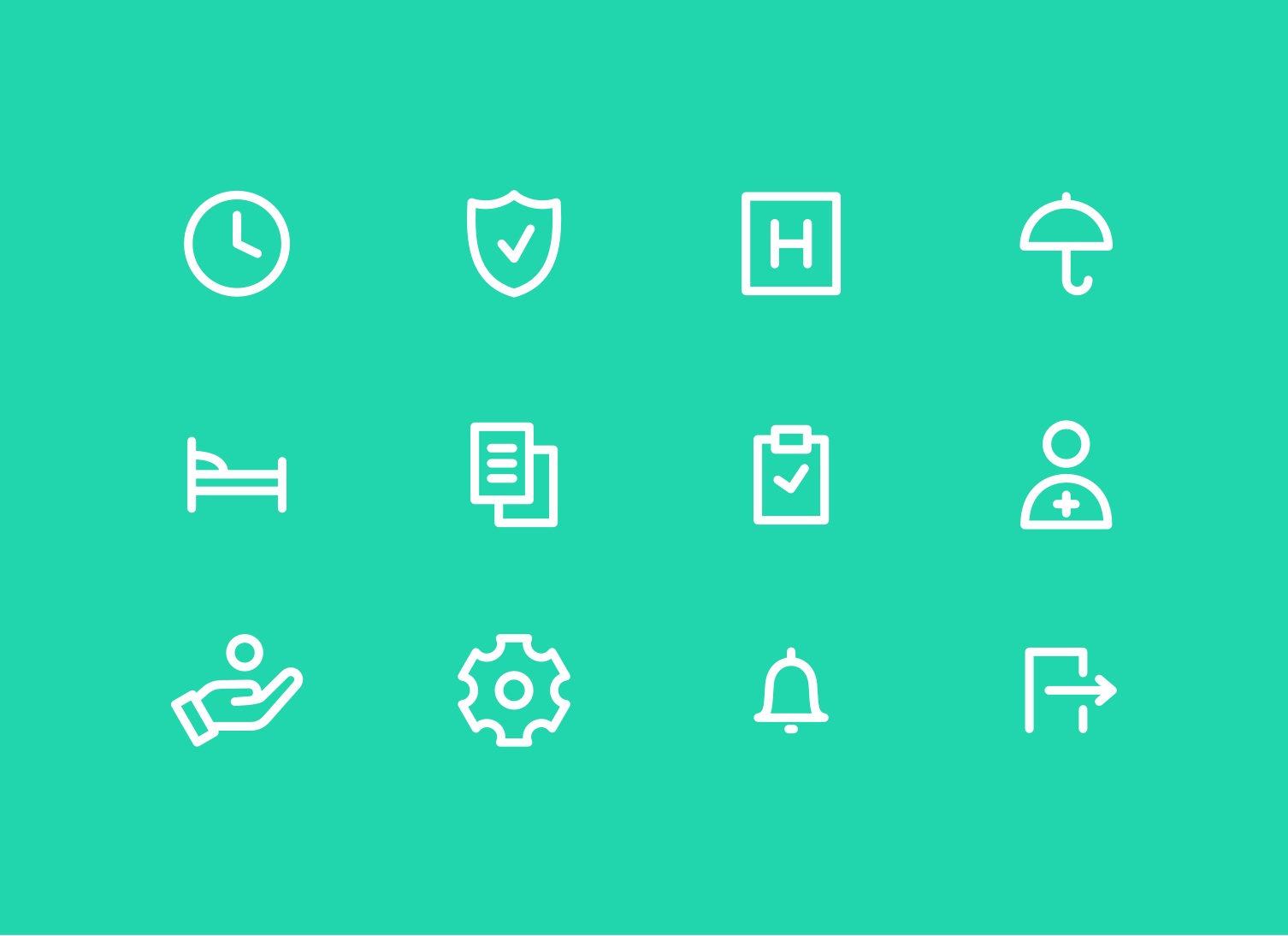
The Tech
We chose established technologies and tools for the development to ensure good scalability and extensibility. The system is written on PHP 7.3 and uses MySQL 5.7 as a main database engine. Docker is used for project environment management. The whole project is securely hosted in Amazon Web Services with scalability in mind. The flexible sprint-based delivery and the constant communication between the development team, design team and the client allowed us to make strategic decisions on the go, aligning priorities with progress. We also used longer development iterations for features which couldn't be released incrementally, followed by a more scrum-oriented delivery in order to improve or enhance the features.
The Results
They've really taken our team on a journey. We had an idea what we wanted to do, but no real way of knowing how to achieve it. They've helped us with all facets of the project from start to finish. It’s impressive to find a partner that can scope out what an idea might look like, as well as designing, building, and deploying the app.